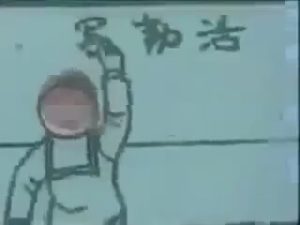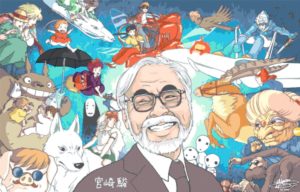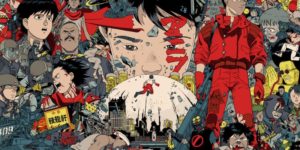The wave of anime which was started by Japanese people with “Astro Boy” in the 1960s in the international region has its own style and world. How exactly has this world shaken our blue-green planet? How did the Japanese, who are on the other side of the world, come out of their crazy animations and inspired by what?
To start with, we need to know what counts as anime and what not. Shortly, anime can be defined as “Japanese made animations”. The root of the word comes from there, too. That’s the reason why “Avatar” does not count as “anime,” it’s not Japanese made. We can say that anime is Japanese people’s national animations.
Now it’s the time for “the firsts.” The first anime ever made in Japan probably aired at the end of 1916 by Shimokawa Oten. The anime which was made with chalk lasted less than five minutes. Due to the reveling of film spools when they are finished, we have only a short scene, which lasts five seconds. The artist Seitaro Kitayama founded Kitayama Eiga Seisakujo, the first anime studio ever, in 1921. However, the studios included the ones founded after that failed because of the unbalance in income-outcome. The film that can be counted as the first long-running anime was made nearly 37 years after that was named “The White Snake Enchantress”.

That’s enough for the first era of the history of anime, now the next stage is “The Golden Era.” At the beginning of it, there is Osamu Tezuka. He created the first internationally known anime, “Astro Boy,” in 1963. He got inspired by Disney while drawing his anime – yes, the very firsts were drawn by hand – especially the big eyes. However, that doesn’t mean that Japanese stole from Disney, they integrated the style into their own and created their own world. They created a new movement with an adaptation, let’s say. As I gave an example from my previous article, they use cultural things like sakura flowers very well. That includes food animations.

Hayao Miyazaki and Isao Takahata can also be given to show legendary animators other than Tezuka. There must be no one who hadn’t grown with the “Heidi” created by the duo in 1974. “Studio Ghibli”, which was founded later in 1985, made a mark on the world of cinema with its films and won many awards. The most widely known anime films of the studio are “Spirited Away” (2001), “Princess Mononoke” (1997) and “My Neighbor Totoro” (1988).

After the 1980s and 1990s, many anime films have made their marks in history. This is the result of the development of the anime industry with the efforts of so many creators in the Golden Age. Science-fiction, war, action and fantasy animations have started to appear in these years. One of my favorites for this period is 1988’s “Akira.” There are two reasons why it’s an interesting science-fiction anime: of course, its fiction and the story is the number one reason, but there is an interesting fact: In 2013, It was announced that Tokyo was to host the 2020 Summer Olympics. The anime takes place in 2019 – which is today – but was created in 1988, and yet an Olympic stadium is seen to be under construction for the next year’s Olympics.

It wasn’t just fiction that developed after the nineties, but technical improvements as well, and they were clearly reflected on the screen. After all those years, technology took its head and today’s effects, drawings, and backgrounds have come to a completely different size. One of the best impressions of this is, for me, 2016’s “Kimi no Na Wa”.

From short animation made with chalk to “Kimi no Na Wa”, anime has evolved in a very serious way. We are now eating the fruits of big producers like Miyazaki. What the Japanese will offer us in the future, I wonder…
…
Edited by Nur Güzeldere
…
